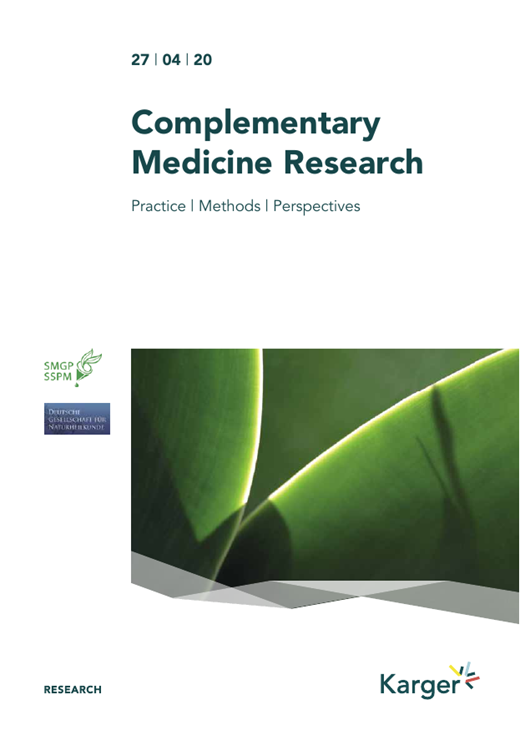If you're like most people you've grown up being told that missing even one day of water is dangerous - Let alone three (!) You have moderators banning anyone who uses the word 'dry fasting' on reddit. It reminds me of water fasting being taboo 15 years ago. The fact that we have two very detailed research studies showing us that a 5-day dry fast is not only safe* but beneficial for the treatment of edema, obesity, and inflammatory and ischemic diseases should shake your belief system to its core. What about even longer? ;)
Paper #1: Dry Fasting Physiology: Responses to Hypovolemia and Hypertonicity
Due to the uninterrupted excretory and metabolic activity of the organism, DF involves 3 risks: (a) blood hypertonicity, (b) hypovolemia, and (c) hypoglycemia. The first risk is a particular consequence of insensible water loss (i.e., pure water loss), the second one of urine discharge (i.e., water and electrolyte loss) and insensible water loss, and the third one of fueling of metabolism.
(!) Yet, the participants in the aforementioned study demonstrated normal blood pressure, heart rate, and hemoglobin oxygen saturation, safe values in serum creatinine, urea, K+, Na+, and glucose, a moderate increase in serum osmolality and a substantial increase in glomerular filtration rate. These observations show the effective compensation of all 3 risks and indicate subtle background mechanisms, orchestrating the responses of all involved systems and organs.


This study found that healthy individuals who dry fasted for five days maintained normal levels of important health indicators like blood pressure, heart rate, and blood oxygen levels. This means that hypertonicity and hypovolemia risks were controlled for really well by the body. They also had safe levels of kidney function markers, electrolytes, and blood sugar, with only a slight increase in blood concentration and a significant improvement in kidney filtration. So via this study, we have a demonstration that even kidney problems were a non-issue. Kidney worries are a big detractor for many people who are considering a dry fast so this should be welcome news to many.
This conclusion really flies in the face of mainstream science, because the results go against everything that has been taught up until this point. You'll die in 3 days without water! Wrong. It’s time to get with the science, people!
Things to keep in mind from this paper on dry fasting safety
There's a few things that stand out in this paper and we'll briefly address them.
Sodium vs Potassium levels diverge
At a certain point, specifically on day 2 of a dry fast, the body starts to dump electrolytes, and in this specific instance, potassium and sodium were monitored. This shows us that you can expect quite drastic electrolyte crashes around day 2.
We already know that aldosterone is highly upregulated causing sodium reabsorption and potassium excretion. This is why you should avoid sodium directly after a dry fast if you want to avoid edema (bloating). Your body is still recovering from the high aldosterone and will cling onto every sodium molecule, which in turn will cling onto every water molecule it can.

This is further evidenced by the dry fast through this data. Around day 3 of the dry fast, we see the divergence occur. Aldosterone is holding onto sodium, but the body still needs to balance itself and buffer the rising acidity. (There are also some interesting theories and work on how rising cortisol helps too) It does so by leeching more potassium out of its body (mostly bones) to make up for this. As the days go on this divergence increases more and more. This is why it is key to really load up on minerals like potassium and magnesium prior to the fast, as well as right after it. I talk about this in the Scorch protocol and other protocols.
What does this mean for preparation for a dry fast?
- Low carb will already come in with pretty low electrolyte levels and you can expect the drop to be milder, as well as sodium retention already to be established. This means that the struggles of the keto flu and breaking through the 3-day barrier will be minimal.
- High carb prep will cause the largest change. This also means this will cause the most hormetic stress, which theoretically will cause a stronger bounce-back effect.
- Higher carb prep will also mean that you have a longer window of hydration, as more water and more electrolytes are being held by the body
Cortisol and Uric Acid vs Vitamin C levels diverge
Cortisol ramps up throughout a dry fast and skyrockets around day 3 and up. You can probably make the necessary correlations there. I’m not going to go deep into cortisol because I’ll make a video specifically about it and dry fasting soon.

But let’s look at antioxidant levels. Amazingly TAC levels rise even though Vitamin C drops, meaning that even though one of the main antioxidants is slowly going away (remember its water soluble), Uric acid and other antioxidants like vitamin E and Glutathione skyrocket. Think of a dry fast as an intense antioxidant bath made by your own body.

What is Uric Acid? Uric acid is a chemical created when the body breaks down substances called purines found in some foods and drinks. High levels of uric acid can lead to the formation of sharp, needle-like crystals in joints or surrounding tissues, causing a painful condition known as gout.
The gout connection: Those that suffer from gout might be scared of fasting. In fact, they may have tried fasting in the past or even just ketogenic diets. Both ketones and uric acid compete for excretion. If you have gout it's usually recommended to practice with a ketogenic diet so that your body adapts to it. In fact, there are countless examples of people getting into ketosis and fixing their gout issues.
What does this mean for dry fasting?
Because Vitamin C is water soluble, if we don’t supplement it, the levels will drop. Think about scurvy. During a dry fast, however, it seems that the body jumps all other antioxidants to rescue the body, but it becomes crucial to supplement with vitamin C after a fast. A diet of fresh fruits and vegetables will help very quickly, but if you’re dedicated to a more animal-based refeed, you’ll need to look into vitamin C supplementation.
Erythropoeietin (EPO) and blood constituent levels
It is absolutely fascinating that EPO levels dropped on a dry fast. Under regular conditions, most people would assume that EPO levels would go up.

What is EPO? Erythropoietin is a hormone produced in the kidneys that is one of the main factors in the production of red blood cells.
We know that EPO is normally expected to rise when blood volume decreases. It’s also expected to rise when oxygen levels are low. That’s why you have a lot of athletes who train in low-oxygen-level environments to get an EPO boost and improve their performance. EPO injections are also banned by the World Anti-doping Committee.
EPO is also expected to be secreted in larger amounts due to Growth hormone, which we already know is released by all forms of fasting, in varying amounts.
But what the study found was that EPO levels DECREASED! What the hell!? The only way to explain this decrease in this scenario would be that the dry fast is producing such a powerful oxygenation effect on the body that it overrides the blood volume decrease and growth hormone pressure. This makes sense, considering the body is becoming so much more efficient and clean. It seems that a dry fast has a hyperbaric oxygen therapy type treatment built right in. That’ll save you some money!
Want to see it in action on your next dry fast? Monitor your oxygen saturation on a dry fast and watch it improve the deeper you go. Most new fitness trackers track your O2 saturation. Tell me how much it improved! You can also watch your HRV levels jump up. It’s highly motivating, and may also give you a little bit of extra drive to push through resistance to get to your goal.
Paper #2: Anthropometric, Hemodynamic, Metabolic, and Renal Responses during 5 Days of Food and Water Deprivation
https://karger.com/fkm/article/20/6/427/356655/Anthropometric-Hemodynamic-Metabolic-and-Renal
Conclusion: The intervention of 5 FWD days in 10 healthy adults was found to be safe, decreased weight and all measured circumferences, and improved renal function considerably.
Blood Pressure, Heart Rate, and Oxygen Saturation on a dry fast

A Systolic blood pressure (SBP), B) diastolic blood pressure (DBP), C heart rate (HR), and D hemoglobin oxygen saturation (SatO2) before, during, and after food and water deprivation (FWD).
It's very interesting to see this data in front of us. It so clearly demonstrates that the body is able to remain in a balanced state throughout the dry fast. In fact, markers seemed to stay improved even after the fast. Specifically blood pressure and oxygen saturation.
Serum Electrolyte Levels on a Dry Fast
These are blood levels, which match with urine levels observed in the other 5-day dry fasting study.
In this one we get to see chloride levels stay fairly balanced as it is not an alkalizing mineral therefore not necessary to be excreted in larger amounts to balance the acidity. We also see a huge increase in serum urea which can be from both protein catabolism to fuel gluconeogenesis. We also know that urea is an osmolyte (hint hint), which reminds us of the importance of osmolytes for safe dry fasting.
There is no definite explanation for the temporary K+ increase on day 2. (probably simply a quick dumping of water) However, no complaints were reported and no heart rhythm changes were registered by any of the participants.
Serum Glucose levels on a dry fast

Serum glucose decrease on days 1-3 could be attributed to the interruption of food supply, whereas its increase on days 4-5 is probably a result of hormonal contra-regulation.
What does this mean when it comes to energy and dry fasting?
This is a clear indicator of the feelings of low-energy, keto flu, and just general malaise that marks the first 3 days and why it's so important to break through this barrier if you're going for longer fasts. Look at day 4. The body is now burning fat more readily and creating glucose from the glycogen in your triglycerides/fat. Of course this is also the reason fat adapted people get to skip this feeling, because their body is already at a stable blood glucose level coming in from day 1.
This should calm down those worrying that their sudden lethargy is a dangerous sign and to understand that it is simply a step in the process of switching energy sources. Believe it or not, true fat adaptation can take months to achieve, so even if you've been keto or zero-carb for a couple months, you could still expect some slight struggle on your first days.
Creatinine Levels and Creatinine Clearance - Kidney Health

Creatinine levels rose slightly, which is normal and to be expected. But Creatinine clearance skyrocketed. Creatinine clearance is associated with kidney functionality. The higher the number, the better the kidneys are filtering.
Why did Creatinine clearance improve so drastically? An increasing osmotic gradient between tissue fluid and blood. This facilitates extra tissue water to be passed to the blood. Extra tissue water from renal parenchyma could also be passed to the blood resulting in decongestion of kidney tissues, improvement of renal microcirculation, and increase of GFR.
The Safety of Dry Fasting
These studies found that healthy individuals who dry fasted for five days maintained normal levels of important health indicators like blood pressure, heart rate, and blood oxygen levels. This means that hypertonicity and hypovolemia risks were controlled for really well by the body. They also had safe levels of kidney function markers, electrolytes, and blood sugar, with only a slight increase in blood concentration and a significant improvement in kidney filtration. So via this study, we have a demonstration that even kidney problems were a non-issue. Kidney worries are a big detractor for many people who are considering a dry fast.
So what does the study tell us about the risks that you'd "logically" be worried about when it comes to not drinking water? The results suggest that the body can effectively adjust to the challenges of dry fasting, thanks to complex mechanisms that help balance fluid and electrolyte levels and manage energy use. This doesn't mean we can fully explain how every mechanism works, because the body is so complex, but it does allow us to make and corroborate many new inferences. If there is one big takeaway from this paper, it's that dry fasting for up to five days seems to be safe for healthy individuals, highlighting the body's remarkable ability to adapt to periods of no food or water intake. Take that mainstream science ;)
Dry Fasting Precautions
There will always be outliers and people who need to approach dry fasting even more carefully than most. Dry fasting is an intense stressor, this is also why it is one of the most powerful ways to heal. However keep in mind the study was on healthy individuals, the sicker you are the more precautions you need to take. Dry fast with the help of a medical professional.
"Without resistance, there can be no growth."
Dive deeper with the following video from the dry fasting club on youtube: Dry Fasting For Dummies: Dangers and Risks - Contraindications
5-day Dry Fast Detailed Experience
Here's a sneak peek of one of my detailed articles about the experience of a 5-day dry fast. You can click here or check out the link below.







